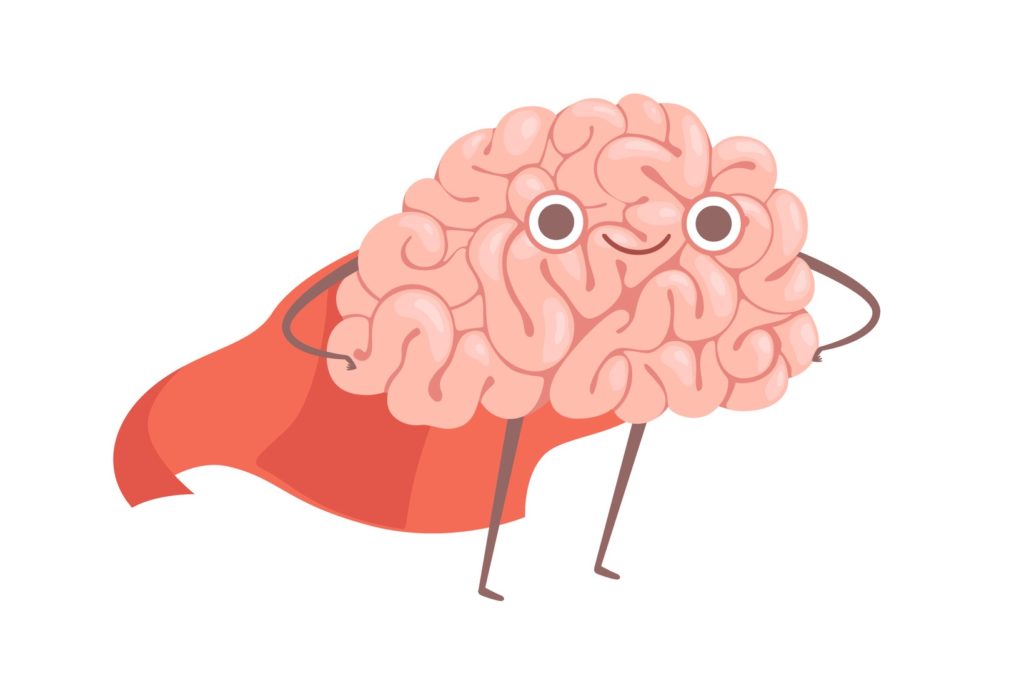Do you wish that you were more adaptable? Do you want to learn things more quickly, unshackle yourself from past emotional traumas, and adopt new habits and practices more easily.
If so, I have good news for you. First, you haven’t been imagining that it’s gotten harder to do so as you’ve aged. But second — and more excitingly — it IS possible to supercharge your adaptability and ability to learn new things thanks to magic of something called neuroplasticity.
How Children Can Teach Us About Adaptability and Resiliency
You may be familiar with something called Hebb’s rule that states, “neurons that fire together, wire together.” While it’s true, particularly in adolescents, it becomes much more complicated as we age. The key to maintain this resiliency as we age, is to follow a set of protocols that we’ll get to in a bit.
That idea of resilience, which is closely tied to the concept of adaptability, is important and something that we often associate with children.
This association is for good reason. Not only do children learn things quickly, but they also rapidly move on from challenging situations — characteristics that make them highly resilient.
While we can all readily observe these characteristics, have you ever stopped to ponder why children have this high level of resiliency and adaptability — and why as we reach adulthood (typically around the age of 20, give or take a few years) it seems to lose some steam?
The answer is neuroplasticity, or the ability of our experiences, information we learn, and decisions we make to modify our nervous system and brain.
The Connection Between Adaptability and Neuroplasticity
Until that ripe old age of 20 or so, we are primed for possibility. And not just in the way that your mom or dad told you that you could achieve anything.
We come out of the womb with around 2,500 synapses per neuron (communication points) and all sorts of loose wiring. You can imagine it like a switch board with thousands of both wires and jacks, but with nothing connected.
And because of all of that wiring, we have the potential for greatness in any given area.
But as we age, our experiences cause certain wires to get plugged into certain jacks — the whole firing together, wiring together thing.
On the one hand, it’s a good thing as those wirings represent our unique skills, tastes, and emotional leanings. But it also means that we become more fixed in our ways and less adaptable.
And something else happens too — of the 100 billion neurons, and 2,500 synapses per neuron we are born with, thousands fade away or get combined as our brain works to build neural highways that help us function more effectively in certain areas of our lives.
What it all comes down to is that through our experiences and choices, we get customized into our own adult factory settings. But it also makes it a lot harder for us to rewire those brain circuits when we want or need to adapt to changes in our life.
So the big question is, are you done or is there a way to do some rewiring and get some of that childlike resilience and adaptability back?

Unleashing the Power of Neuroplasticity
The really good news is that there absolutely is something you can do to rewire your brain, but that good news is only a few decades old. Until the 1970’s, scientists thought that after your “factory settings” were set, that was it — you were done.
But thanks to the fathers of neuroplasticity, Johns Hopkins researchers David Hubel and Tornsten Wiesel, we now know that our brains are not the stagnant and unchangeable things that science long proclaimed.
But what even Hubel and Wiesel didn’t fully understand, is that neuroplasticity is not a color-by-number, automatic process.
The reason is that as we get our factory settings, our neurotransmitters find their permanent homes. As that happens, the number of synapses and neuropathways gets trimmed further and further down to shape and specialize our brain.
Additionally, glia cells fill in the spaces between neurons, functioning like gluey packing peanuts, creating even less open room for change.
All of this leaves us with the skills and knowledge that are important to us and which we use to live our everyday lives.
But what happens after our settings are set and our neurotransmitters have been appropriately trimmed, and then we want to learn a new skill, develop a new habit, or need to overcome some emotional trauma?
Well, that’s where all this pristine wiring starts to work against us — and its the part that Hubel and Wiesel hadn’t figured out yet.
Recent research, however, is showing that following a particular protocol like the “recipe” I’ve included below, can help us unleash our natural neuroplasticity. It does so by encouraging the regeneration of new brain cells (something called neurogenesis) and enabling new connections between neurons.
The Recipe For Change and Adaptability
There are five simple steps in this “recipe” that, if you adopt them as a practice, will help you harness your brain’s natural neuroplasticity and almost rekindle your childlike resilience and adaptability.
Decide

The first step to enacting change is deciding that you desire to do so. And just to be clear, this isn’t some woo-woo manifestation ritual. This step is essential because making that decision essentially programs a part of your brain called the prefrontal cortex (or the PFC). It is the executive decision maker of our brain (the boss, if you will) and decides how we react and engage with emotions. It is the driver of “self-control,” and the engager of new habits. The first step in establishing fresh wiring, therefore, is to establish that we would like that wiring to exist and to make sure our PFC is on the job!
Fertilize

The second pivotal factor for increasing plasticity is what I fondly refer to as brain fertilizer. You can dream about making changes all you want, but if your “soil” is unfit for nurturing new neuropathways, you will end up disappointed. BDNF, or brain derived neurotropic factor, is the ultimate brain fertilizer because it helps neurons grow — and that helps make possible the union from neuron to neuron. Although you can’t go to a hardware store for this fertilizer, you can upregulate BDNF production through aerobic exercise, whole foods, and a healthy fasting practice.
Be Alert

The third ingredient in this plasticity recipe is to be alert and aware of what’s happening. The thing is, contrary to what you may think, you can’t just be alert whenever you want. What we think of as alertness happens when our body releases epinephrine (more commonly known as adrenaline). Epinephrine, when released from the locus coeruleus at the top of our brain stem, wakes up our brain, if you will, showering it in love and adrenaline. This primes your brain, and puts it into action mode, making it ready to receive new information. So, to increase your alertness and, therefore, openness to new information, you need to up your epinephrine levels. Some ways to do that is through a good night of sleep, fasting, a cup of coffee, or stimulants like nicotine, Adderall, and nutraceuticals.
Fuel Your Focus

But, as you may have experienced if you are an avid coffee drinker, simply being alert doesn’t mean being focused. Likewise, alertness in and off itself, does not result in plasticity.
In addition to the alertness from the epinephrine release, you also need to focus that alertness — something that is handled by acetylcholine, another neurochemical released from both the nucleus basalis and the brain stem. You can think of it like the fuel to your alertness engine. When it’s released, it kickstarts your nervous system and brain to change. The best way to help this process along is to make sure you’re getting enough of a nutrient called choline in your diet (or via a supplement, if you must). The best way to do that is to focus (pun intended!) on eating a diet rich in whole foods.
REST

Kickstarting is great and important, but for change to really bake-in and be longlasting, we need to rest. I’ve written previously about the importance of sleep — and this is part of the reason why.
But if you are not a huge fan of sleep or can’t make time for it in your busy schedule (eye roll), you can also explore NSDR, or non-sleep deep rest. In this practice, you’re basically putting yourself in a state of sensory deprivation (no music or sound, eyes closed, supine).
Yes, I am saying that naps are good! In fact, research has found that NSDR for a period of less than 90 minutes directly after learning was actually more effective for learning retention than even a solid night of sleep! Take that anti-nappers!
That said, not only does getting adequate shut eye protect and preserve your nervous system and brain function, but it’s during that 8 hours of rest that any neural circuitry that was activated during the day gets strengthened. In other words, sleep is what really seals the deal when it comes to neuroplasticity and adaptability.
– – –
If you are able to practice these five principles, consistently and together, you will not only experience a better quality of life (always a great bonus!), but you will see noticeable change in your cognitive function, your ability to obtain and retain new information, and be able to reignite the adaptability that you need to change your life for the better!
